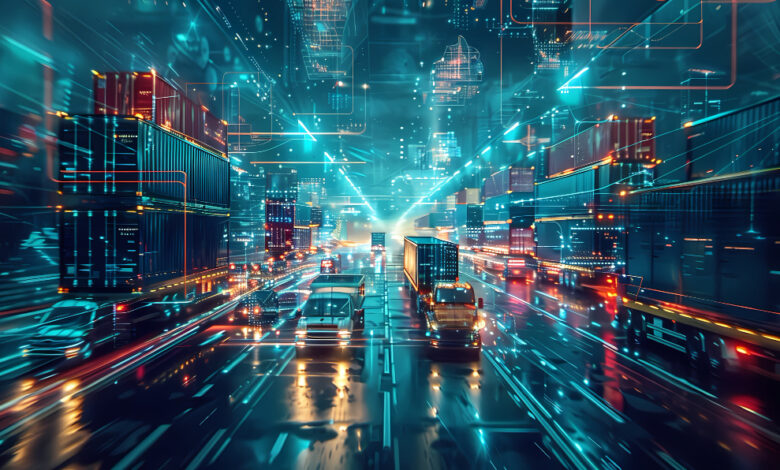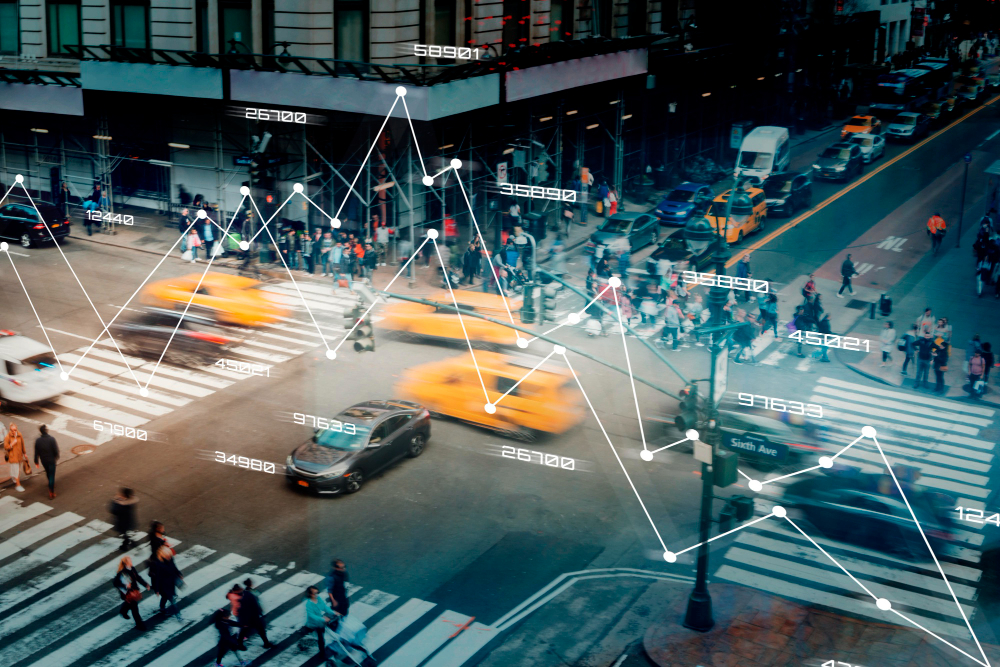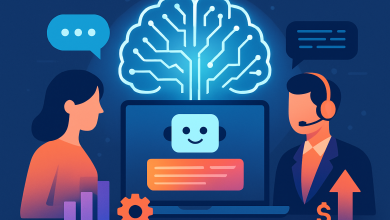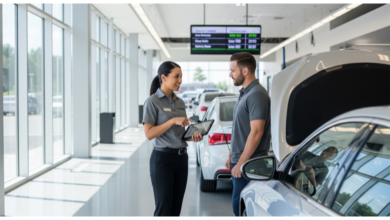
Traffic congestion continues to be one of the most persistent problems in U.S. cities, costing time, fuel, and environmental quality. Traditional infrastructure is static, unable to adapt to the constant changes in flow and demand.
Smart traffic systems powered by artificial intelligence (AI), the Internet of Things (IoT), and connected sensors are changing this landscape. They transform intersections and roadways into adaptive, data-driven environments that react in real time, improving mobility, safety, and sustainability.
The Technologies Behind Smart Traffic
AI enables predictive and adaptive control. Algorithms process real-time data from intersections, sensors, and vehicles to anticipate congestion, optimize light timing, and detect incidents before they escalate.
IoT networks connect thousands of devices — traffic lights, cameras, radars, and environmental sensors — collecting continuous information about vehicle movement and road conditions. In pilot deployments, adaptive signal control has reduced travel times by up to 25% and fuel consumption by ~15%.
Edge and cloud computing ensure that this data is processed at the right speed and scale: edge devices handle immediate responses like changing a light phase, while cloud systems analyze long-term patterns for planning.
Finally, vehicle-to-everything communication allows vehicles to exchange information with each other and with infrastructure, forming an intelligent ecosystem that improves coordination and safety.
Adaptive Traffic Lights and Smart Signal Control
Adaptive signal systems are one of the clearest demonstrations of how technology improves everyday mobility. Traditional signals follow fixed schedules that often ignore real-world conditions. Smart systems, guided by AI and sensor input, continuously adjust timing to reflect actual traffic flow.
Even as smart systems reduce collisions and improve traffic flow, large vehicles such as trucks remain critical to U.S. logistics — and also more vulnerable in complex traffic environments. If any unwanted incidents occur, it’s important that drivers and companies act promptly, documenting evidence and seeking advice from an experienced truck accident attorney familiar with connected-vehicle data and smart-infrastructure systems.
When a particular direction experiences heavier volume, green lights are extended automatically. If emergency vehicles approach, intersections can be cleared in advance. The results are faster travel times, lower fuel use, and reduced emissions. Each system improves over time as algorithms learn from historical patterns, adapting to seasonal traffic variations, events, and construction zones.
Smart Sensors and Data Integration
Modern intersections rely on a mix of sensors — inductive loops, radar, cameras, and GPS — to count vehicles, measure speed, and detect pedestrians. Environmental sensors track pollution and weather conditions, linking traffic control to sustainability goals.
What makes these systems powerful is integration. Data from multiple sources is fused into a central traffic management platform. City engineers can monitor hundreds of intersections in real time, visualize congestion, and automatically implement solutions such as signal coordination or rerouting.
Analytics derived from these data streams guide long-term infrastructure planning and help policymakers evaluate the effects of interventions before expanding them citywide.
Connected Vehicles and the Role of 5G
Connected vehicles are the next stage of this evolution. Through V2V and V2I communication, vehicles share their position and speed, allowing for cooperative driving and proactive safety measures.
Cars can warn one another about sudden stops, alert drivers to dangerous intersections, and synchronize movements to minimize idling. These capabilities depend on low-latency communication, now made possible by 5G networks, which transmit data in milliseconds.
As adoption grows, collective intelligence emerges: every connected vehicle enhances the network’s predictive accuracy, creating a safer and more efficient driving environment. This foundation will also support the gradual integration of autonomous vehicles.
Smart Infrastructure Initiatives Across the U.S.
Federal and local programs are accelerating smart mobility. The U.S. Department of Transportation funds projects through initiatives like the Intelligent Transportation Systems Joint Program Office and the Smart City Challenge, encouraging collaboration among cities, universities, and technology providers.
Cities such as Columbus, Tampa, and Las Vegas have tested connected corridors, adaptive signals, and data-driven traffic centers. These pilots demonstrate how real-time control and predictive analytics can cut congestion without expanding road capacity.
New funding from the Infrastructure Investment and Jobs Act continues to support modernization through digital infrastructure, cybersecurity, and broadband expansion — key prerequisites for nationwide smart mobility.
Challenges and Limitations
Despite success, smart traffic still faces technical and organizational challenges. Interoperability between systems from different vendors remains limited, complicating integration across regions. Cybersecurity poses another risk: connected networks must protect sensitive data while maintaining real-time responsiveness.
Investment and maintenance are also major concerns. Upgrading legacy intersections requires capital, skilled staff, and long-term support. Smaller municipalities often adopt partial or phased implementations until costs decline.
Nevertheless, as hardware becomes cheaper and standards mature, adoption will spread. AI algorithms are becoming more efficient, edge devices more reliable, and 5G coverage broader — all of which lower barriers for new deployments.
The Road Ahead
Smart traffic management represents a shift from reactive to proactive mobility. Instead of responding to jams after they form, systems now predict and prevent them. In response to safety concerns, new U.S. rules will require nearly all new cars and trucks to include automatic emergency braking by 2029 — expected to save hundreds of lives and prevent innumerable injuries.
Over time, integration of connected vehicles, adaptive control, and AI-driven forecasting will make transportation networks self-optimizing. Future developments will likely include digital twins of entire road systems, where simulations test new rules or layouts before real-world application.
Data from millions of daily movements will inform city planning, environmental policies, and public transit coordination. As these capabilities grow, the distinction between infrastructure and intelligence will fade — roads will become computing networks as much as physical pathways.
Conclusion
AI, IoT, and connected sensors are redefining how America moves. By linking vehicles, intersections, and control centers through continuous data exchange, cities can manage traffic dynamically rather than mechanically.
This transformation already delivers measurable benefits: smoother flow, fewer emissions, and safer roads. It also supports larger goals of sustainability and economic efficiency.
The journey toward intelligent mobility is ongoing, but its direction is clear. Each adaptive signal, sensor node, and communication link brings the nation closer to a transportation system that learns, anticipates, and evolves — building not just smarter traffic, but smarter cities.





